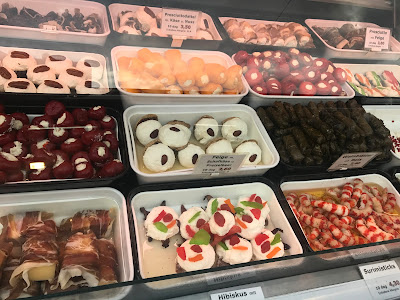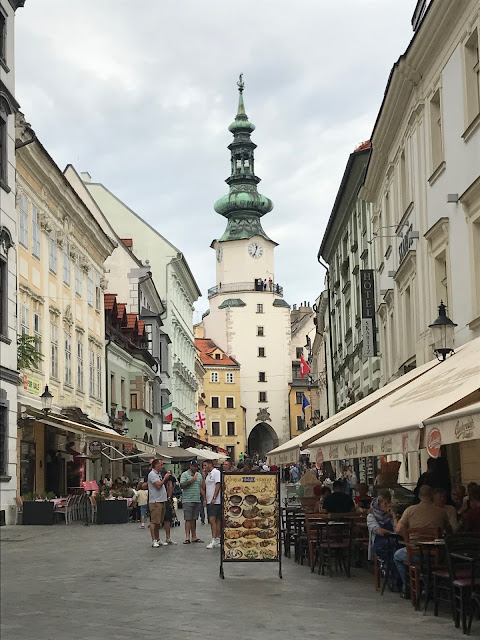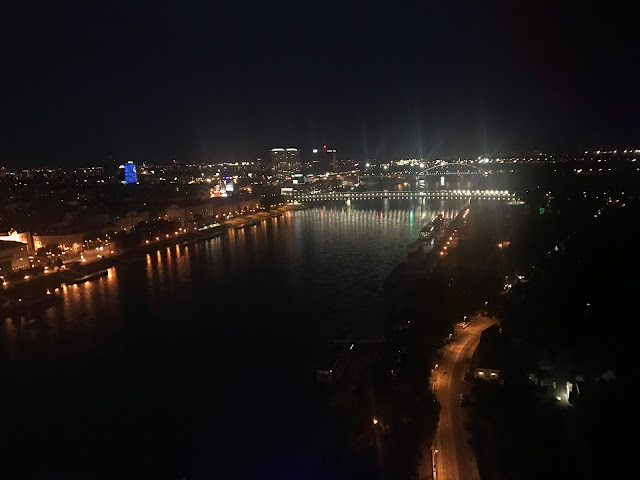 |
"What I have in my heart and soul - must find a way out. That's the reason for music."
- Beethoven
|
I was glad that my wonderful husband convinced me to spend a personal day in Vienna. I was going to head back right after my conference so he's not solo-parenting more than necessary, but he insisted that I spend an extra day in Vienna since I'm already going to be there anyway. To think that I had to be convinced to take a day off and spend it in Vienna? Argh. What's wrong with me? 5 points for husband. And you bet, I enjoyed that day. I had indicated in my reservation that this day off was part of my 40th birthday celebration so my hotel made it right by serving mimosa with breakfast. Hey now!
 My piano teacher used to live in Vienna and told me about the Spanish Riding School or Spanische Hofreitschule, which is a world class equestrian school that has been in existence for over 440 years. Vienna’s Spanish Riding School was established by the Habsburgs back in the 1500s, with the school buildings forming part of the Hofburg Palace. The school’s main performance space, the Winter Riding School is not your regular arena. The hall is decorated with delicate carvings and huge chandeliers, and a portrait of Emperor Charles VI hangs on one wall; the riders tip their hat as a gesture of gratitude every time they enter the arena. Sadly, taking photos weren't allowed but you can see them here.
My piano teacher used to live in Vienna and told me about the Spanish Riding School or Spanische Hofreitschule, which is a world class equestrian school that has been in existence for over 440 years. Vienna’s Spanish Riding School was established by the Habsburgs back in the 1500s, with the school buildings forming part of the Hofburg Palace. The school’s main performance space, the Winter Riding School is not your regular arena. The hall is decorated with delicate carvings and huge chandeliers, and a portrait of Emperor Charles VI hangs on one wall; the riders tip their hat as a gesture of gratitude every time they enter the arena. Sadly, taking photos weren't allowed but you can see them here.
If you, like me, are curious as to the origin of the name of the school - It’s not the school or its riders that are Spanish, but the horses. The horses are all Lipizzaners, a breed which mixes Spanish, Arabian and Berber ancestry, and today's horses in the school has their bloodline traced back to 1750 and the first Habsburg stables. The training to become a professional rider takes over six years and only a few can be masters.
While I couldn't catch a show while I was in Vienna, I was able to watch a daily exercise routine. While the horses steal the show, it's really the art and mastery of training the horses to the way they elegantly move that makes this school unique. The fluidity in the movement comes from the harmony between rider and horse - not very different from a conductor commanding consensus to do an arpeggio or staccato with empathy, authority, and impeccable timing. Perhaps even more impressive, I sensed a feeling of contentment, pride, and accomplishment as the riders trained their Lipizzaners. It's as if I could feel the actual joy and fulfillment from the people working here, which made the experience of watching them even more enjoyable, and I left with gained perspective.
 After strolling along and picking a Viennese cookbook at a bookshop, my next stop was lunch at Café Frauenhuber, the oldest coffeehouse in Vienna, also known to have hosted Mozart and Beethoven. Mozart's last public performance was said to have taken place in this very café. Although it's billed as Mozart's favorite café, surprisingly, there seem to be very few tourists and it had a more local feel. It's probably due to the place being tucked away in a little alley, plus, it's more costly than the surrounding cafes. The only downside is the menu has limited vegetarian options. Still, they served traditional Austrian food that screams 'Authentic'.
After strolling along and picking a Viennese cookbook at a bookshop, my next stop was lunch at Café Frauenhuber, the oldest coffeehouse in Vienna, also known to have hosted Mozart and Beethoven. Mozart's last public performance was said to have taken place in this very café. Although it's billed as Mozart's favorite café, surprisingly, there seem to be very few tourists and it had a more local feel. It's probably due to the place being tucked away in a little alley, plus, it's more costly than the surrounding cafes. The only downside is the menu has limited vegetarian options. Still, they served traditional Austrian food that screams 'Authentic'. | My book and meal matched! |
When I was in high school, we were required to write an biographical essay on a famous person for our English class. I chose Beethoven for reasons I can't recall, possibly due to my fascination with playing Fur Elise then, but I my research left me feeling very awed by his life, by his music, by his genius.
Ludwig Van Beethoven born in Bonn, Germany, has been performing publicly as a pianist since he was 8 years old. His father had pushed him hard to become the next child prodigy after Mozart, and he studied briefly under Haydn and possibly briefly with Mozart. He later on moved to Vienna to make a name for himself as a virtuoso pianist and gain favor with the nobility. But, how can one play when you're losing your hearing, or worse, your mind? Beethoven hid his deteriorating hearing but continued to compose, conduct and play his music.
I couldn't leave Vienna without paying my respect to the Maestro at his final resting place at Zentralfriedhof. If it was the only place I'd have time to visit in Vienna, I would have been fine with it. Beethoven died at 56 years of age. Thousands of citizens attended his funeral procession including Franz Schubert. At Zentralfriedhof, in Group 32A, you'd find Beethoven's grave very near Schubert's grave and Mozart's memorial. Johannes Brahms' is just across along with Johann Strauss and his family. Ludwig Boltzmann, Physicist, is also buried in Zentralfriedhof, just before the presidential crypt. His entropy equation is engraved on his memorial stone. Very few places can give you the quiet introspective that a walk in a graveyard provides.
 |
| Humbling to stand here - Beethoven (L) and Schubert's (R) graves, and Mozart's memorial in the middle |
 |
| Boltzmann's tombstone bears the inscription of the entropy formula: S = k log W |
 |
The iconic Secession building. "Der Zeit ihre Kunst. Der Kunst ihre Freiheit."
—“To every time its art. To art its freedom.”—
|
 |
| Last portion of the Beethoven Frieze |
The art was meant for the exhibition only, and the frieze was painted directly on the walls with light materials. However, it was preserved and is now on permanent display in the Vienna Secession hall and considered one of Klimt’s masterpiece highlighting Viennese Art Nouveau. The art was so popular that a portion of it was used in one of the most famous collectors' coins: the Austrian 100 euro, The Secession Coin, minted on November 10, 2004.
Now for the other arts at The Secession, I wasn't too crazy about.
 |
| My kids can replicate this with little effort. |
 |
| Selection of herbs and spices |
 |
| Say cheese! |
 |
| This one! |
 |
| Spicy! |
 |
| Mini Sacher Torte to go! |




































